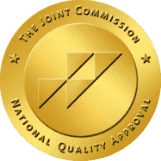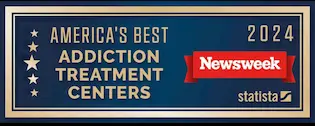Fentanyl Overdose Signs
Fentanyl Overdose Signs
Fentanyl Overdose Signs
Fentanyl is a highly dangerous and, at times, deadly substance. Learn about the signs of a fentanyl overdose in this article.

Article Contents
What is Fentanyl?
According to the National Institute on Drug Abuse, overdose deaths involving opioids more than doubled from 2010 to 2017. The deaths remain at an astronomical level of almost 50,000 deaths each year. Many of these deaths include the opioid drug, fentanyl. In California alone, fentanyl accounted for almost a third of all overdose deaths.1
The California Department of Healthcare Services reports that fentanyl overdose deaths have almost quadrupled since 2018. Because fentanyl overdose deaths have become so prevalent, it’s critical to spot the signs of this issue to help save a life.2
Find Help Now
What Does It Treat?
Fentanyl is a strongly controlled substance with a high potential for abuse. Fentanyl’s potency and abuse potential classify it as a Schedule II Controlled Substance with the DEA. As a comparison, other Schedule II substances include Vicodin, methamphetamine, and oxycodone.3
Drug Class
Fentanyl is also categorized in the drug class called opioids. Unlike other opioids like heroin, fentanyl is synthetic, meaning that it is man-made. Compared to opioids like morphine, fentanyl is fifty to one hundred times more potent. When used legally, fentanyl is prescribed for severe pain after surgical procedures or for cancer pain.
Other Names
The brand names for fentanyl are Duragesic, Actiq, and Sublimaze. When used illicitly, fentanyl can be found under the street names China White or White Persian.4
How is Fentanyl Used?
Legal Use
Fentanyl is highly effective for the treatment of severe pain. It is typically administered as an injection, orally, or as a fentanyl patch. However, fentanyl may also be dispensed as a lozenge and consumed like a cough drop.
Illegal Use
Fentanyl sold on the street comes from illicit street labs. Illegal fentanyl is available in many forms. Though it’s typically sold as a powder, it can also be injected, snorted, placed onto blotter paper, eye or medicine droppers, or administered as nasal sprays.
Fentanyl from street labs is also made to look like pills, usually other opioids. Consequently, a drug called carfentanil is sometimes mixed in with this drug or made to look like regular fentanyl. Carfentanil is an opioid utilized for veterinary purposes, usually for large animals like elephants. It is one hundred times more potent than fentanyl, and it is not meant for human use.5
The Dangers of Fentanyl
Why Is It So Dangerous?
These illegal laboratories lack quality control or product information, making their use dangerous. Drug dealers are inconsistent with their potencies. They may also mix fentanyl in with other drugs like cocaine or heroin as a cheap option for a stronger high.
Fentanyl’s potency makes it an attractive choice for drug dealers who want to strengthen their product or drive sales, therefore creating a market for fentanyl-laced drugs. For people who abuse drugs, street fentanyl’s unpredictable potency makes it difficult to answer the question, “How long does fentanyl stay in your system?” Therefore, given fentanyl’s hazards, its use can easily result in a fentanyl overdose.6
Fentanyl-Laced Substances
What’s more, people who use drugs may unwittingly purchase fentanyl, not knowing that they are using dangerous, life-threatening substances. For example, dealers have been known to sell fentanyl pills made to look like oxycodone or Xanax. By mixing fentanyl with other drugs, or outrightly deceiving their customers, dealers are selling their purchasers a drug that is almost one hundred times more potent than they think.6
Opioid Addiction
With fentanyl comes the dangers that occur with any other opioid—the potential for physical dependence and tolerance. The more often fentanyl is used, the greater the chance tolerance to the drug will develop. This factor means that more of the drug is needed to achieve the same effects as before, leading to a greater chance of addiction or overdose. Because of fentanyl’s potency, the risks for overdose are even greater.7
Opioids are a central nervous system (CNS) depressant. The same nerve pathways that offer pain relief and euphoria associated with opioids also cause sedation and respiratory depression. Fentanyl overdose symptoms occur when too much of the drug remains in the system, causing a reduction in respiration and resulting in oxygen deprivation. Fentanyl, because of its potency, causes respiratory depression at smaller doses than other opioids, resulting in a higher risk of an overdose.

Fentanyl Overdose Death on the Rise
In general, drug overdose deaths rose 30% in 2020, with 93,000 deaths alone in that year. Many of those deaths were driven by fentanyl.8 In a rare public alert, the DEA issued a public warning in 2021 about a sharp rise in fake prescription drugs being sold on the streets, containing potentially fatal doses of fentanyl. These pills were made to look like prescription Percocet or oxycodone. Although those drugs are dangerous in their own right, the fentanyl in the fake pills is far more potent and life-threatening.
The agency confiscated more than 9.5 million fake pills in one year, more than the last two previous years combined.9 Knowing the exact fentanyl overdose amount for the U.S. poses problems because fentanyl is often mixed with other synthetic opioids or substances. Synthetic opioids like fentanyl are even far more dangerous than naturally occurring opiates like heroin. Because of fentanyl’s dangers, it is essential to be aware of fentanyl overdose signs.10
Fentanyl Overdose Signs
A person will rarely die immediately from a fentanyl overdose. Most times, there will be time to save the person as long as there is someone who can recognize the fentanyl overdose symptoms. Recognizing the difference between someone who is high and someone who has overdosed may be challenging, but it’s always ideal to err on the side of caution — you could save someone’s life.
Common Symptoms
The most common fentanyl overdose signs include when:
- The body is limp and heavy
- The fingernails are blue or bluish-black
- The lips are blue or purple
- The individual is unresponsive
- There is a loss of consciousness
- The individual is awake but not alert
- The individual is awake but unable to communicate
- They have slow and shallow breathing
- Their heartbeat is slow or not beating at all
- The individual is suffering from erratic breathing or not breathing at all
- Their skin is blue (for light-skinned individuals)
- Their skin is gray (for dark-skinned individuals)
- They are making gurgling sounds
- They are vomiting
Combining Substances
Combining opioids like fentanyl with other drugs can also increase the risk of a fentanyl overdose. Taking fentanyl with other CNS depressants like Xanax, Ativan, Klonopin, or alcohol can potentiate fentanyl’s effects — resulting in an overdose and increasing the speed of onset. Developing an awareness of the overdose signs, especially in environments where drugs and alcohol are mixed, can save lives.
Emergency Treatment for Overdose
Calling for medical assistance or a 911 response can save a person from an overdose death. However, while waiting for help to arrive, the Centers for Disease Control and Prevention (CDC) recommends the following steps:10
- Call for emergency assistance
- Administer naloxone, if on hand
- If possible, keep the individual awake and breathing
- Allow the individual to lay on their side to prevent choking
- Remain with the individual until help arrives
Naloxone is an injectable medication that is safe to use during opioid overdoses. It’s injected into the muscle or sprayed into the nose, and can rapidly counteract the effects of opioids.10
Fentanyl Addiction Treatment
The most effective way to avoid a fentanyl overdose is to stop using the drug. However, abruptly stopping fentanyl can lead to severe, and sometimes dangerous, withdrawal symptoms. Many fentanyl addiction treatment options are available for every individual’s unique needs.
Medication-Assisted Treatment
Medication-assisted treatment (MAT), administered through a treatment facility or doctor, can make the withdrawal process more comfortable.
Residential Treatment
For people who have around-the-clock support, a residential treatment facility can offer trained staff to help with fentanyl withdrawals. For others who wish to remain in their home, outpatient treatment can assist them with their recovery during the day. With support and attention, people who want to stop using fentanyl can find their way on the right path to recovery.11
Resources
- https://www.drugabuse.gov/publications/drugfacts/fentanyl
- https://www.dhcs.ca.gov/services/Documents/CA-Overdose-Increases-2020.pdf
- https://www.dea.gov/drug-information/drug-scheduling
- https://harmreductionjournal.biomedcentral.com/articles/10.1186/s12954-016-0105-2
- https://www.pbm.va.gov/AcademicDetailingService/Documents/Pain_Patient_FentanylCarfentanil_IB101137.pdf
- https://www.health.harvard.edu/blog/fentanyl-dangers-potent-man-made-opioid-2016080510141
- https://medlineplus.gov/druginfo/meds/a605043.html
- https://www.drugabuse.gov/about-nida/noras-blog/2021/08/drug-overdose-deaths-in-2020-were-horrifying-radical-change-needed-to-address-drug-crisis
- https://www.dea.gov/press-releases/2021/09/27/dea-issues-public-safety-alert
- https://www.npr.org/2021/09/27/1040899776/dea-public-safety-alert-fake-prescription-drugs-fentanyl
- https://www.nami.org/About-Mental-Illness/Treatments/Treatment-Settings




